 |
Traditionalist Issues
Liberals, Modernists and Progressivists
Atila S. Guimarães
I have been asked to point out the differences among Liberal Catholics, Modernists, and Progressivists, since these terms have been used in the United States in a way that is inter-changeable and can lead to confusion.
Liberalism, Modernism and Progressivism, in a certain sense, are like grandparent, father and son of the same family. Let me explain.
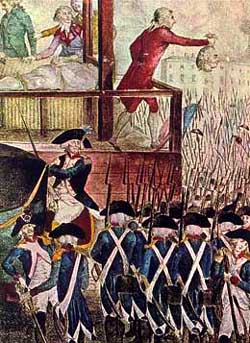
The liberal accepts the principles of the French Revolution which installed the Modern State |
Liberal in the ideological spectrum has little to do with liberal as a synonymn of generous, magnanimous, munificent, which are original meanings - good to know in order to set them aside when dealing with modern Liberalism.
Ideologically speaking, a liberal is, in a general sense, any person who accepted the principles of the Enlightenment and the French Revolution – Liberty, Equality, and Fraternity. Liberal is a term that comes from the acceptation of that revolutionary liberty. By extension, the liberal accepted other consequences of the French Revolution, such as the separation of Church and State, secular education for children and youth, civil marriages, and mainly, the idea that equal status should be given to all religions before the civil law.
In that historical phase, the term liberal Catholic applied to those who accepted the French Revolution and swore fidelity to the Modern State born from it. Thus, the French ecclesiastics who swore fidelity to the Civil Constitution of the Clergy were Liberal Catholics.
The term evolved, and took on a broader meaning. Liberal Catholics became those who – without taking any formal oath – accepted the principles specified above, and assimilated them as a part of their mentality. In this light, liberal Catholics would accept the principle of the sovereignty of the people as mandatory for any political regime; hence, they would accept that the democracy which issued from the French Revolution would be a legitimate system of government, or even the only legitimate one.
This position implied a rejection of Catholic monarchy, whose last version had been beheaded by the French Revolution. This anti-monarchist position of liberal Catholics was reflected within the Church. Many liberal ecclesiastics wanted to apply democracy to the Church’s hierarchical structure as well. This explains why in 1869, when Vatican Council I was convened, the liberal Bishops, such as Strossmayer and Dupanloup, opposed the Petrine Primacy and Papal Infallibility as they were solemnly defined by Pius IX in union with that Council in the Constitution on the Church, Pastor Aeternus (July 18, 1870).
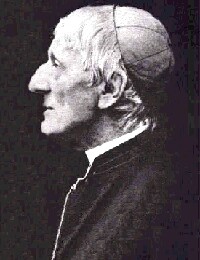
In England Cardinal Newman held liberal positions |
Pope Leo XIII became famous for his politics of ralliement [reuniting], which signified the approval of the Church for the revolutionary democracy installed in France (1). This was a clear liberal position of Leo XIII, and alas, not the only one. Indeed, protected by his support, Liberalism gave birth to Modernism.
Famous liberal Catholics include Lammenais, Lacordaire and Montalembert in France, Döllinger in Germany, Gioberti and Rosmini in Italy, Newman and John Acton in England, O’Connell in Ireland, and Sterckx in Belgium.
The counter-revolutionary Catholics who opposed Catholic Liberalism took positions against the French Revolution and its consequences. Therefore, they favored sustaining the more than 1,000-year-old Catholic French monarchy, the union of Church and State, Catholic education, Catholic marriage with the full force of law, etc. They were also favorable to the monarchy in the Church as well, and therefore they were enthusiasts of the Petrine Papacy and Papal Infallibility.
These anti-liberal Catholics became know as ultramontane Catholics, because they defended the Papacy which was in Rome, beyond the mountains, the Alps, in relation to France, where most of the ultramontane force gathered. Ultramontanism became synonymous with anti-Liberalism.
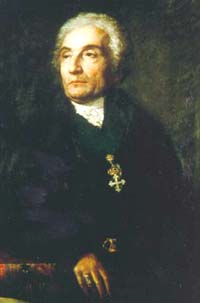
Joseph de Maistre, leader of the ultramontane movement |
Famous ultramontane Catholics include Joseph de Maistre, Louis Veuillot and Dom Guéranger in France, Donoso Cortés in Spain, Taparelli D’Azeglio in Italy, Manning and Faber in England, von Ketteler in Germany, Rauscher in Austria.
Modernist was that Catholic who blatantly wanted to make a ralliement not only with the Modern State, but with the entire modern world - modern philosophy, modern science, and even the modern myths. So many adhesions to the modern epoch naturally generated the name of Modernism to characterize that current.
While Liberalism was mainly turned toward the political sphere, Modernism extended to philosophy and assimilated part of German Idealism. Namely, the theory that there is an essential divine immanence in the human soul formulated by Schleiermacher was assumed by Johann Adam Möhler, the Catholic founder of the Theological School of Tübingen, Germany. From there it influenced both German and French Modernism. From philosophy, this error simultaneously gained ground in theology and extended to the social sphere. The various types of Modernists that resulted from this process are described in Pascendi by St. Pius X. Modernism is much broader and more structured than its predecessor, Catholic Liberalism (2).
A progressivist differs from a modernist in two important developments of the same errors: the extension of their consequences and the subtlety of their expression.
Regarding its expanded consequences, Progressivism came to light simultaneously as a four-fold movement: liturgical, biblical, patristic and social.
The liturgical movement started in the 1920s in various Benedictine Abbeys – Maria Laach in Germany, Maredsous in France and Amay sur Meuse in Belgium – fostering the participation of the people as if they were as essential as the priest in the Mass. Also a bad ecumenism assimilated into the liturgy Protestant ideas such as that the Mass is less a sacrifice and more a banquet, that the word of God is as important as the Eucharist, etc.
In parallel, the ambience of mystery proper to the Greek Schismatics was praised - first in liturgy, then in dogmatic theology. Hence the liturgical movement presented the Church as a Mystery – the Mystical Body of Christ – in opposition to the Militant Church, which supposes a visible and hierarchical society.
The biblical movement basically promoted a new interpretation of Holy Scriptures. According to it, the sacred texts should be understood not as they were written, but conditioned to their historic context, the literary genre used, the testimonies of witnesses upon which the sacred authors based themselves, the social and cultural influences present at the time, etc. To achieve such an interpretation, biblical scholars needed to employ extensive archeological research, the contribution of natural sciences, as well as the consensus of contemporary social and psychological theories, which propose to explain the behavior of society and the individual. With so many different criteria, the practical consequence is a free interpretation of the Scriptures: a goal that pleases Protestants and favors ecumenism.
The principal protagonist of the biblical movement was the French Dominican Fr. Marie Joseph Lagrange, who was the founder of the Biblical Institute of Jerusalem (1891) under Leo XIII. Lagrange escaped condemnation as a Modernist and remained quiet under the pontificate of St. Pius X. In the 1920s, his Historic Method took over Catholic exegesis.
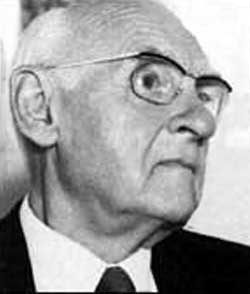
Hans Urs von Balthasar, one of the adepts of the New Theology |
The main goal of the patristic movement, also called re-sourcement [return to the sources] was to jump back over Scholasticism to the thinking of the Fathers of the Church. It was a way to eclipse Scholasticism and its logic. Adepts of this movement sought out those Fathers whose writings had marked Platonic tendencies, or even mistakes that further down the line, the Church had transcended or condemned. In the 19th century this movement had been initiated by Möhler and Scheeben in Germany and Newman in England. From the 1930s on it would take on a new strength and extension with the commentaries on the Fathers by von Balthasar, De Lubac, and Danielou, to name a few of the many components of the Nouvelle Theologie.
The social movement represented the marriage of the Church with the revolutionary world as such. A similar attempt had been halted with the condemnation of the Sillon movement by St. Pius X. The principal protagonists of the progressivist social movement included Belgian Fr. Joseph Cardijn who founded the Jeunesse Ouvriere Catholique – JOC [Catholic Youth Workers,] in 1924; French Dominican Fr. Louis Joseph Lebret who founded the Jeunesse Etudiante Catholique – JEC [Catholic Student Youth] in 1929, and French Dominican Fr. Jacques Loew who founded the Worker Priests in 1941. These associations and all that revolutionary social work that proceeded from them had a practical consequence of uniting Catholic social work to Communism under the pretext of helping the poor. Following the same path of adaptation to the revolutionary world, Progressivism joined with Communism, just as Liberalism had united with the French Revolution around 150 years before.
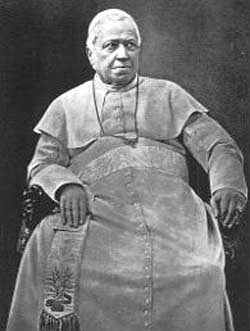
Progressivists avoid direct confrontation with the Syllabus of Pius IX |
From these four movements, Progressivism extended to modern philosophy, accepting Phenomenology and Existentialism, extravagant consequences of German Idealism, and to theology, “re-reading” all the dogmas of the Church and presenting interpretations different than the traditional ones.
Regarding its subtlety, Progressivism differs from Modernism in this: until their victory at Vatican II, progressivists tried to avoid the condemnations of St. Pius X in Pascendi and Pius IX in the Syllabus. Even though they upheld the same errors, they were careful to present them in a less blatant version, as similar as possible to orthodox doctrine. Therefore, it can be more difficult and complicated to catch these errors.
These are the main differences and analogies regarding the three terms: liberal Catholic, modernist, and progressivist.
So, if you refer to the present day progressivists as liberals or modernists, most probably the person with whom you are speaking will understand what you mean. But, you open the door to more confusion, especially if you are talking to young people who lack historical education.
Actually, it is not a good habit to call the son by the first name of the father or the grandson by the first name of his grandfather. The normal practice is to call each one by his individual name; today we should use the forename progressivists.
1. Cfr. Guimarães, Matt, Vennari, Horvat, An Urgent Plea: Do Not Change the Papacy, Los Angeles: TIA, 2001, pp. 21-23.
2. Cfr. An Urgent Plea, pp. 15-22

Posted February 21, 2006

Related Topics of Interest
 Revolution and Counter-Revolution Revolution and Counter-Revolution
 St. Leo II Condemned Pope Honorius as a Heretic St. Leo II Condemned Pope Honorius as a Heretic
 Declaration of Resistance to the Vatican Ostpolitik Declaration of Resistance to the Vatican Ostpolitik
 Doubts about the Sanctity of John XXIII Doubts about the Sanctity of John XXIII
 The New Mass: A Flavor of Protestantism The New Mass: A Flavor of Protestantism
 Conservatives, Traditionalists, and Counter-Revolutionaries Conservatives, Traditionalists, and Counter-Revolutionaries

Related Works of Interest
|
Traditionalism | Hot Topics | Home | Books | CDs | Search | Contact Us | Donate

© 2002- Tradition in Action, Inc. All Rights
Reserved
|
 |
|